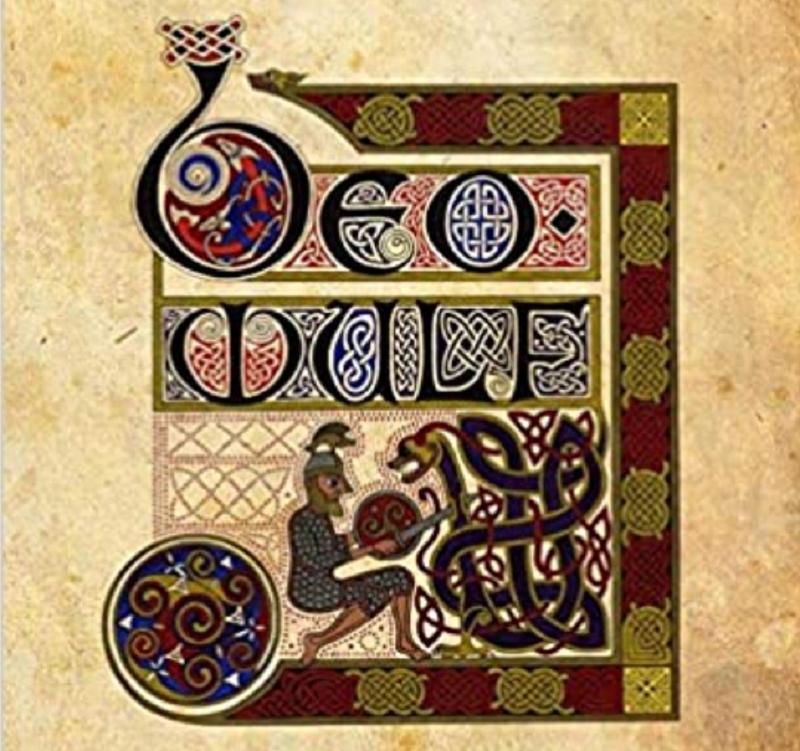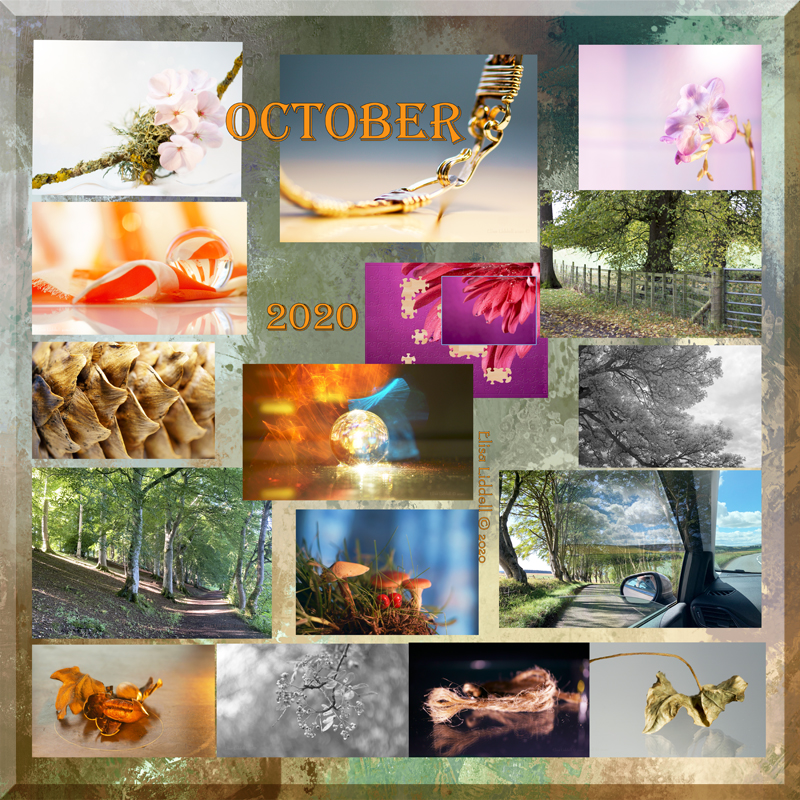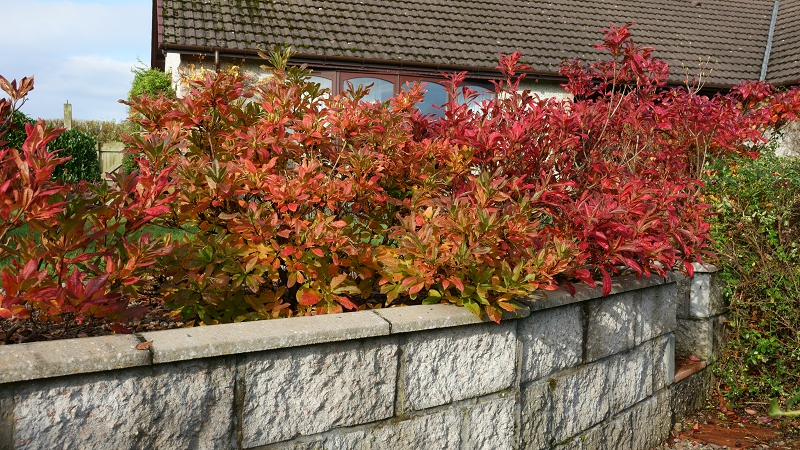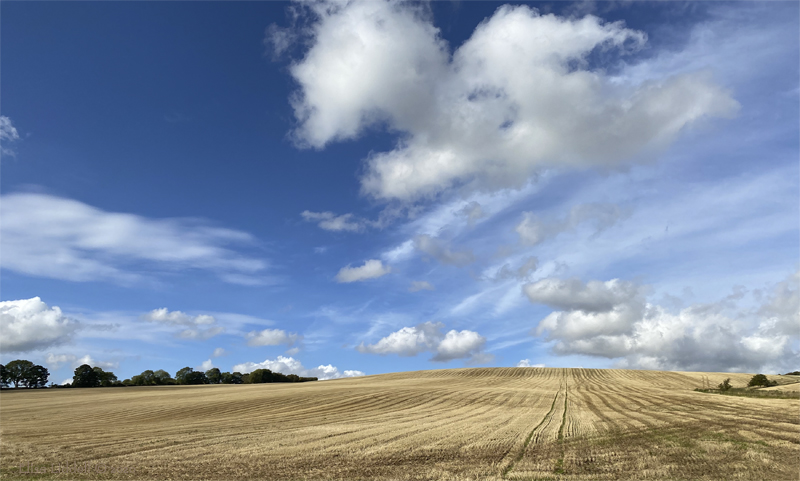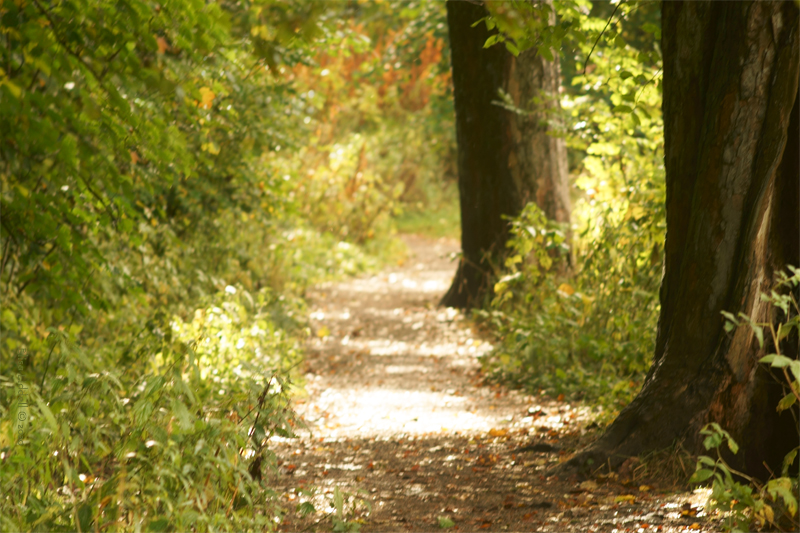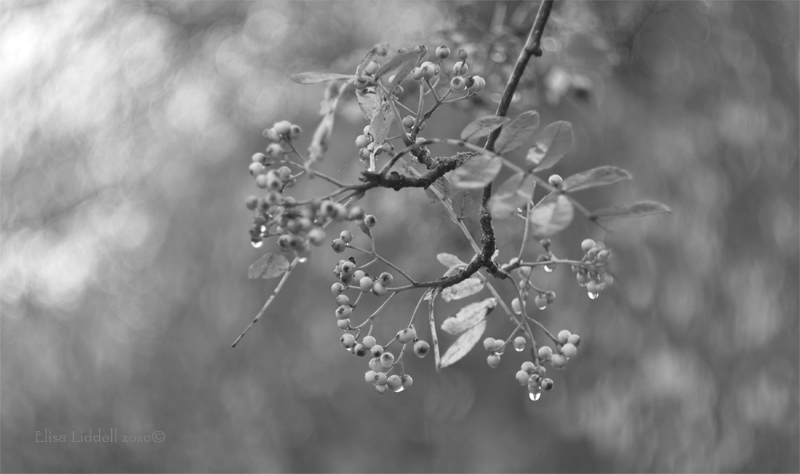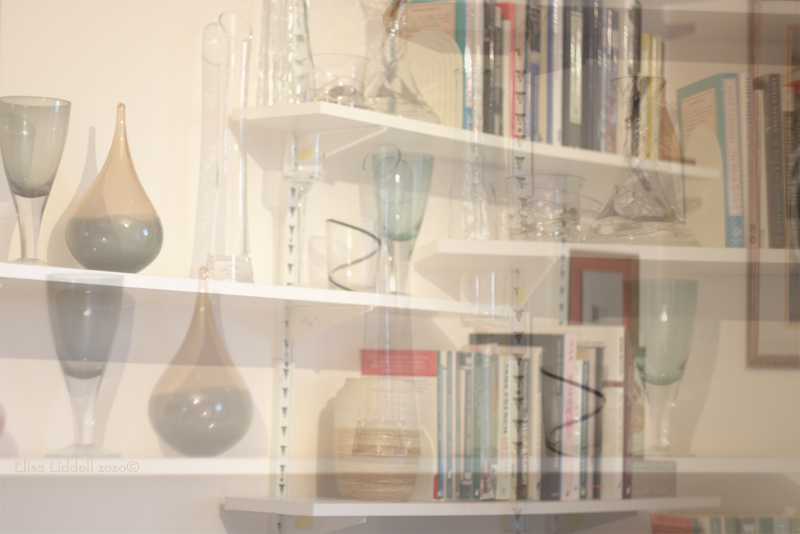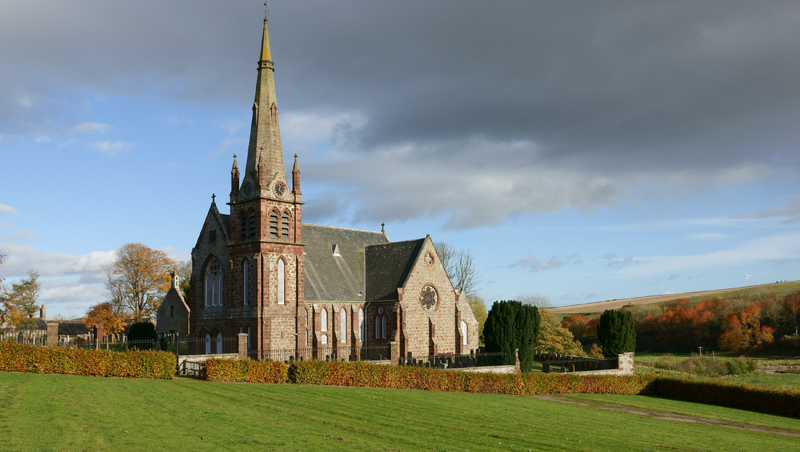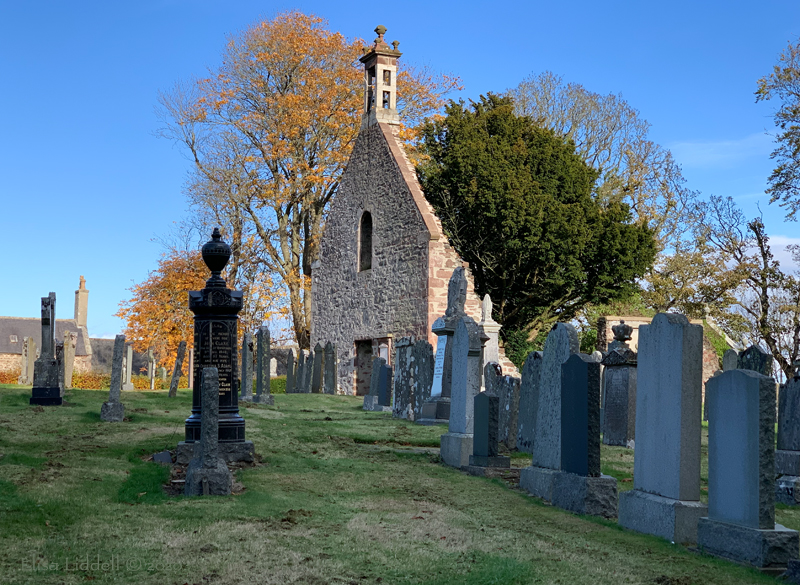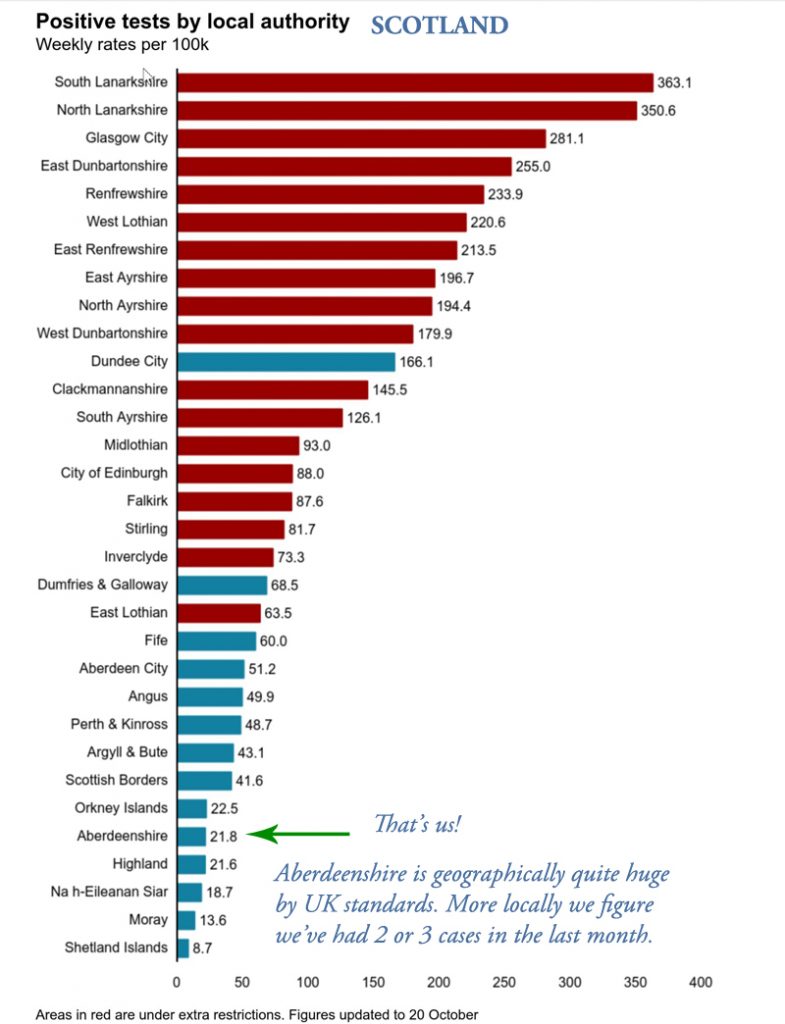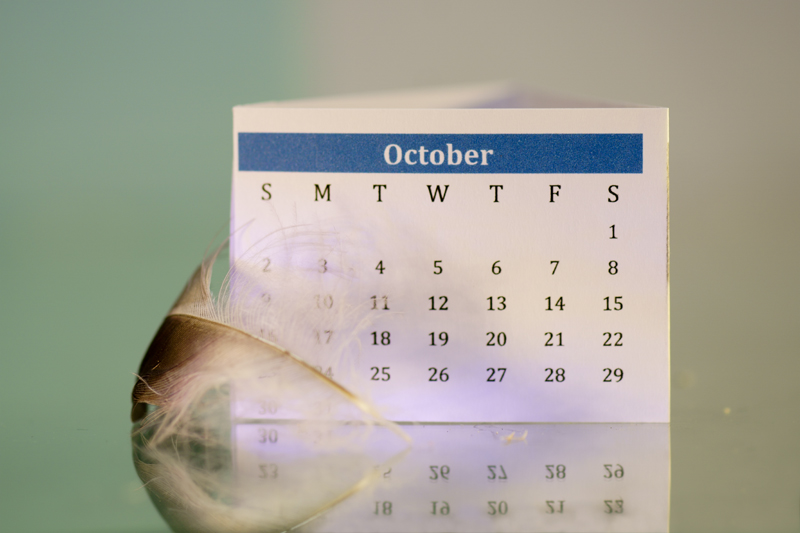
Autumn has arrived – the nights are cooler, and nights close in sooner. The leaves are changing colour. Yellow is the predominant colour, there are fewer blazing reds – I wonder if that is due to the change in our weather that climate change is bringing? We had a long drought in the Spring and summer, and then a week or two of extreme heat.
October began with mopping up after the rainstorms that broke our months of drought. We bought a simple rain gauge this summer, and placed it in the middle of the front lawn. It measured over an inch of rainfall overnight during the worst of the rainstorms.
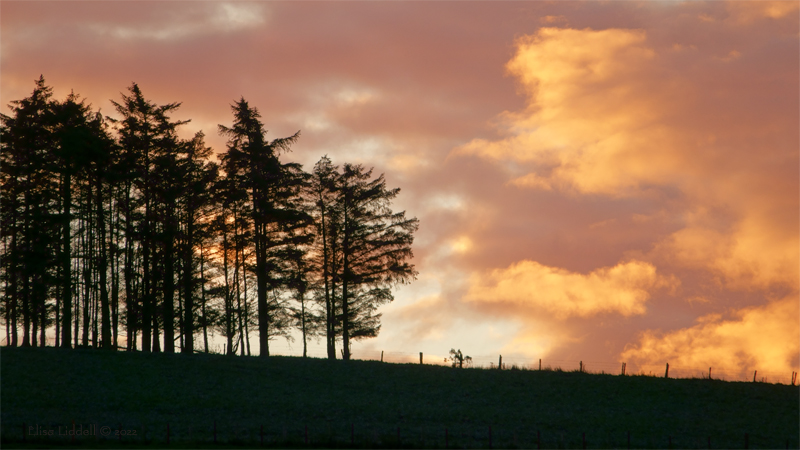
In autumn we start to see some stunning dawn ‘events’. The sun is lower in the sky when I wake to catch the rising sun.
And there is a similar shift in the sky when it comes to moon-rise!
It isn’t often that I manage to catch the moon rising behind the same trees as I shoot with the rising sun behind them!
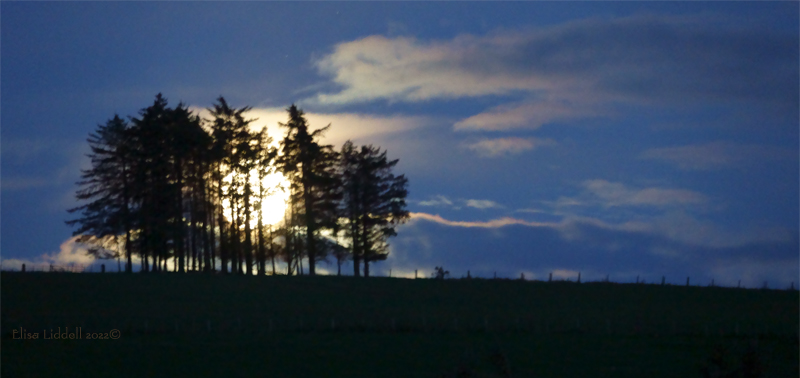

The low winter sun is wonderful to capture as we drive along, but not so good for the driver! It can dazzle and shine right in your eyes!
I am the passenger, needless to say! I often shoot with my Sony RX100, which is great at handling both the speed and the bumps in the road.
Personally the first week of October was marked by a sudden eye “subconjunctival haemorrhage”. The entire eye looked blood red. I went to the optician to get it checked out. It seems that sometimes, a blood vessel in an eye can break, leaking blood on the surface of your eye. It looked most dramatic, but was not dangerous, or signalling an underlying problem. It took two weeks for the haemorrhage to disperse … and I am hoping that ‘red eye’ will not visit me again!
I did feel a little beleaguered, as I am still recovering from my first tooth extraction in over 50 years! Not since teenage removal of wisdom teeth! And the cavity is sore and tender, and making eating quite a challenge still. But there has been a positive ‘after effect’ of the tooth extraction – and that has been my introduction to the salt mouth-wash. I never knew about the benefits of using plain salt water as a mouth rinse after brushing.
Remaining on health issues, we both have our winter Covid booster and ‘flu jabs booked in Insch Cottage Hospital at the end of October. So we drove there twice, scouting out where the cottage hospital is and what parking facilities there might be.
Aware that we might have some significant ‘backlash’ after the double vaccines, I tried to catch up with my ever-expanding ‘To-Do’ list beforehand. There is always a big energy hit with these vaccines, my Post Viral/ME underlying condition ensures that a long balancing act is to be expected.
So we arranged for an oil delivery (our primary heating is by oil-fired boiler).
We found a 50% rise in cost – 1£ per litre. We fill up twice a year, so it was a 50% rise in just 6 months. And no ‘cap’ has ever been imposed on heating oil, unlike those lucky enough to be on mains gas supply! I wonder what it will be like in the spring of 2023 when we next need to fill up the storage tank?
Next was to renew our driving licenses – getting older means renewing every 3 years!
A big task that has been hanging over my head for some months now is my iPODs. I have 7 or 8 of them collected over the years, and all full of music, podcasts, dramas and audio books. They are getting older and Apple no longer produce them. So over this Spring and summer I have sent them away to have the internal hard drives replaced with SD cards. That means that the SD card can hold more data (music and audio books) and it is also less likely to be damaged by a fall or knock.
The down side is that I’ve lost all my playlists, and all the songs I had loaded – they are wiped clean. So now I need to start the long process of re-loading iPods etc with all my listening!
Another revolution in my listening is the discovery of a Bluetooth speaker which can play music direct from my latest iPhones!
My iPods are too old, but the newer iPhones can play anything I load, as well as streaming services such as BBC Sounds. So I am loading up both Classical and Jazz, as well as my favourite groups and singer/songwriters.

The big advantage is that it is not dependent on electrical power – so the 6-day power cut of last winter could have been made easier – as will the planned ‘rota’ of cuts for this winter!
But there have been tech problems as well as triumphs …. my 8TB HUGE store failed with corrupted data segments. I had to replace it (expensive!) then replace and rebuild contents. A long slow process . It also threw up problems with Dropbox – issues with exFAT and NTFS. Dropbox uses HTFS and the new EHD uses exFat. I discovered later that Dropbox requires NTFS on Windows. Always problems!!!
And how can I forget (though I am trying VERY hard to) the TRUSS fiasco /0\ A new PM (for a few days/weeks) and a spectacular crashing of the financial structure of the UK economy, that we will be paying for over the next many years! Together with the Brexit fiasco and the runaway inflation … the Tories are showing the reality behind their much-trumpeted claim that “the economy is safe in our hands”.
So as October ends we prepare for the vaccines on 28th – get as much essential planning for ‘resilience’ and the coming winter – bring lots of planters indoors. The rest of the month I can expect some days with a high temperature and feeling very very ‘flu-ish.
But to end on a more upbeat note;;;
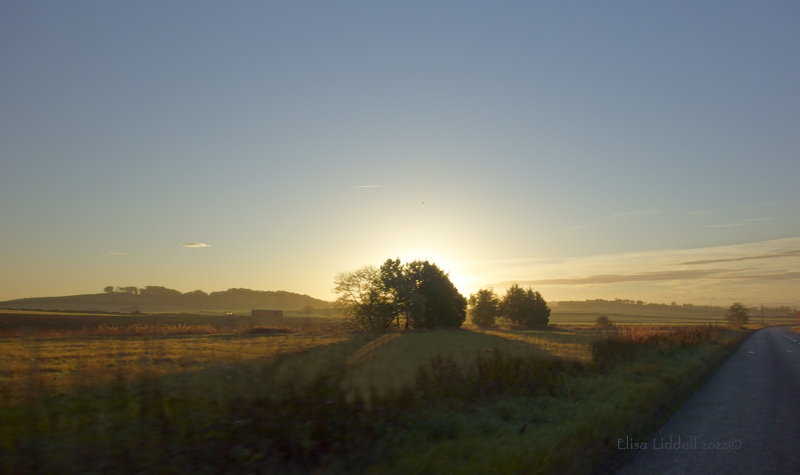
… on Sunday 23rd we drove to Inverurie and the incredible mix of low winter sun, and early morning mist made for a magical photoshoot. Long shadows and a bright rising sun.
The fields were glowing with mist that the sun had turned golden. The closer fences and trees stood out as stark silhouettes against the brightness.
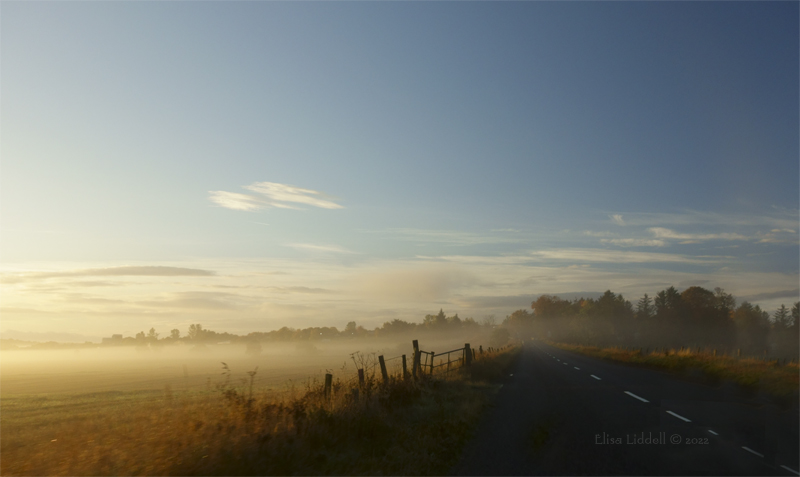
And so on to November, where winter begins with a personal loss.
Back to the 2022 Cover page
Back to Notebooks cover
Flickr holds Elisa’s online Photo Gallery
© 2022 Elisa Liddell

